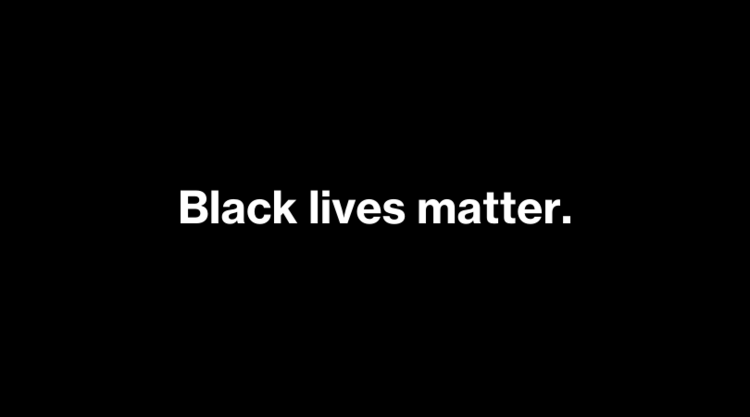No justice, no peace
Black lives matter.
Habitat for Humanity Capital District recognizes the trauma and suffering caused by institutional racism and the terror it inflicts on Black Americans here in our community and throughout this country. We have work to do as an organization and we are committed to growing in our anti-racism by continuing to learn from marginalized and oppressed communities, centering their voices and concerns in our work, and creating equitable partnerships led by our Black neighbors and other people of color.
Habitat for Humanity grew from the roots planted at an interracial farm in rural Georgia during the 1940s. Our founders understood that there could be no peace without justice, and they sought to build a demonstration plot for a new way forward where Black and white families lived and worked side by side as true equals. White supremacists banned Koinonia Farm members from their churches, boycotted their goods, and terrorized them with bullets and bombs.
Today, as our community and communities across the world demand racial justice, we stand in solidarity with the freedom fighters of our time. We support and affirm the grief, anger, and unrest being made increasingly visible in communities across the world, rooted in centuries-old institutionalized oppression that is alive and well today.
Habitat for Humanity is committed to ensuring that Black employees, volunteers, partners, ReStore family, and Habitat homebuyers are safe, heard, respected and supported — both within our organization and within our wider society. We will not tolerate anything less than the full and equal right to exist without fear of racism, discrimination and violence. We condemn police brutality and denounce state-sponsored terrorism in all forms. We pledge to do more to build a more just, more beloved community for us all to call home.
Resource List
Racist housing segregation has a ripple effect on various parts of the lives of Black people, Indigenous people, and other people of color. Since housing is our expertise, we’ve shared below some resources on learning more about the origins and impacts racist housing policies have on the personal lives of our BlPOC neighbors and the harmful impacts for our community as a whole.
We should note that while Habitat for Humanity’s origins are as a housing ministry that brought together Black and white families specifically to help Black families access homeownership in rural Georgia, Habitat today partners with families of all races, ethnicity, creeds, and countries of origin. We primarily build in low-income census tracks, which also happen to be Black-majority neighborhoods with histories of disinvestment due to racist housing policies and practices.
We hope our non-Black and white supporters have also committed to engaging with anit-racist work, including supporting Black Life Matters and Movement for Black Life, donating to bail funds and Black movements, and patronizing Black-owned businesses. We hope that while you explore other anti-racism resources, that you find the resource list below helpful for educating yourself on systemic racism related to housing. Our list is by no means exhaustive of racist housing history, and we’re reminded that although housing segregation and injustice deeply affects BIPOC lives, it is especially the responsibility of white individuals to take an equitable share of the work to dismantle unjust systems.
Books
The Color of Law by Richard Rothstein, on the history of the racist practice of redlining. *The author of this book is white.* A critique of this book by Destin Jenkins, a Black academic specializing in racial capitalism , can be found here.
Race for Profit by Keeanga-Yamahtta Taylor, on how the real estate industry and racist housing policy continued after redlining ended. Taylor is a Black woman, academic, and writer of many books on Black resistance and liberation.
The Big Sea: An Autobiography by Langston Hughes includes memories of how his integrated neighborhood racially disintegrated over time due to racist urban renewal policies and practices during the 1930s.
Know Your Price: Valuing Black Lives and Property in America's Black Cities by Andre Perry, a national economic policy expert, tours a history of racist policies that devalued Black lives, Black property and wealth, and Black communities. You can also read an article about the book and about Andre Perry here, and you can listen to an interview with the Boston Foundation here.
Video
NPR’s Code Switch has a feature of redlining and racist housing policy available here. The video explains how these policies effect the lives of Black households and communities, including school, health, family wealth, and policing. It is
Owned: A tale of two Americas (2018) is about the pervasive racism and commodification of the US’s housing and homeownership sector.
How Housing Redlining Contributed to the Racial Wealth Gap and Segregation from NowThis.
Urban’s video and other resources on zoning, available here.
How Redlining Shaped Black America As We Know It, from The Root’s Unpack That
Alliance for Housing Justice produces many videos that explain current fights for furthering fair housing and housing justice, which you can find here.
“Segregated by Design,” is a short video part of a teaching curriculum based on Richard Rothstein’s book book Color of Law. Find the video and teaching resources here.
This video, Systemic Racism Explained, by act.tv, explains some of the ways housing segregation effect the lives of Black and white Americans.
A list of films on housing inequality can be found here.
Articles
Housing Supply Constraints from before the Pandemic Will Worsen Inequality as We Start to Recover (May 27, 2020) from Urban.com.
The Government Created Housing Segregation. Here’s How the Government Can End It. from The American Prospect
A Look At Housing Inequality And Racism In The U.S. (June 3, 2020) from Forbes.com
Policing and Segregation discussions from NYU’s Furman Center
How Segregation Shapes Fatal Police Violence from NPR’s Gene Demby, CodeSwitch
The black-white economic divide is as wide as it was in 1968 (June 4, 2020) from the Washington Post.
Housing, health, and why we build (by us!), which also links to TU reporter Bethany Bump’s article on the role of housing in health in the Capital District.
Systemic Inequality: Displacement, Exclusion, and Segregation: How America's Housing System Undermines Wealth Building in Communities of Color from Center for American Progress.
This infographic from United for a Fair Economy summarizes the US government’s “boosts and blocks” for building wealth.


